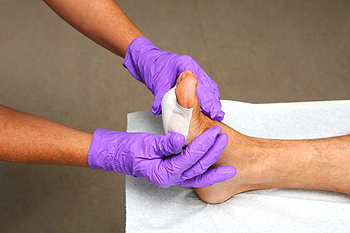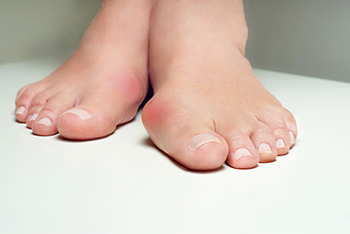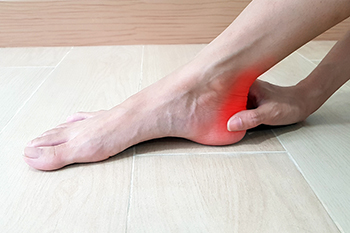
A puncture wound has a small hole of entry caused by a pointed object, such as stepping on a nail. It differs from a cut, which produces a long tear in the skin. Puncture wounds might disguise something serious going on, such as a developing infection, and must be handled differently than cuts. Foot puncture wounds are more common in warm weather when people are more apt to go barefoot. These types of wounds should be treated within 24 hours, because there is danger of embedding the piercing object under the skin. Foreign bodies from dirt and debris or things like glass, needles, seashells and other sharp objects can include bacteria that get into the wound. Socks and shoes might interfere and get tangled up in the wound at the time of puncture as well. Puncture wounds are, by nature, unclean because the object doing the puncturing is not sterile. Anything that remains in the wound increases the chance of complications. If you have sustained a puncture wound on your foot, please see a chiropodist who can determine the depth and severity of the wound, clean it out, and provide the best methods to treat it.
Wound care is the process of treating and preventing wounds on the feet. This is especially important if you have diabetes, as diabetic foot wounds are common and can lead to serious complications when left untreated. To learn more about proper wound care, please consult with one of the specialists from Thornhill Foot Clinic. Our chiropodists will assess your condition and provide you with quality foot and ankle treatment.
Why Is Wound Care Important for Diabetics?
While wound care is important for maintaining the health of your feet, it is especially important for people with diabetes. This is because diabetics often suffer from poor blood circulation, causing foot wounds to heal very slowly or not to heal at all. Diabetics also frequently suffer from neuropathy or nerve loss. This means no matter how big or little the wound, they might not feel it on their foot. If the wound becomes severely infected, amputation may be necessary. This is why it is imperative that diabetics complete daily foot checks.
Wound Care Basics
The best way to care for wounds is to prevent them in the first place. It is recommended that people with diabetes perform a daily examination of their feet to locate cuts, scrapes, sores, or wounds. Early detection allows for ample time to treat the wounds and prevent further complications. If you notice a wound at home, you can clean it using water, apply an antibiotic ointment, and cover the wound with a clean bandage. Seeing a chiropodist, who can examine your feet thoroughly and treat any existing wounds, can also help you maintain proper foot health.
If you have any questions, please feel free to contact our office located in . We offer the newest diagnostic and treatment technologies for all your foot care needs.




